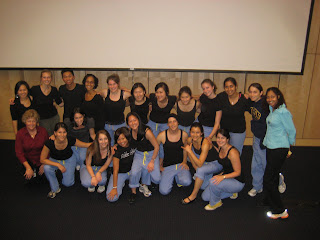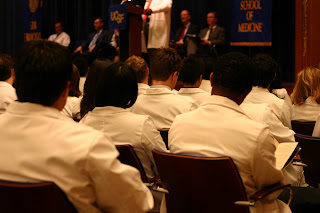
Teddy bear wallpaper lines the top of the room. Large machines beep, and tubes are covering most of the crib that holds Baby E. Her small body is covered in plastic. Her face is just visible underneath the breathing tube. Her head is covered with white gauze, holding a series of green and red wires in place, which are connected to an EEG machine to monitor her brain wave activity. A camera records her movements. Despite the loud noises of the Neuro-Intensive Care Nursery (NICN), her eyes remain closed as if she were completely oblivious to her critical state of health.
The UCSF Neuro-Intensive Care Nursery (NICN) is located on the 15th floor of Moffitt Hospital. The front windows show a panoramic view of the city, from the ocean to downtown. Family members mill in and out of the nursery.
Dr. Tom Shimotake, Co-Director of the UCSF Neuro-Intensive Care Nursery, had given me a tour and introduced me to Baby E. Baby E had been transferred from another hospital and admitted to the NICN the previous night. Though being born full-term, she was in critical condition.
Since opening in April of 2008, the NICN has seen referrals of this type quadruple. UCSF's NICN represents one of the first nurseries in the United States that specializes in treating infants who have experienced brain damage during birth because of asphyxia, which prevents oxygen flow to a newborn’s brain and can lead to irreversible injury of neurons.
The NICN integrates multiple technological and treatment modalities along with clinical trials, to optimize the monitoring and care of critically ill infants who are at high risk for developing cerebral palsy, mental retardation and other cognitive problems later in life.

We were joined by Deidre Jarrell, Baby E's nurse, who has been with the NICN since its inception. She has specialized training to care for infants like Baby E who have suffered brain damage at birth. She works 12-hour shifts, attends to Baby E and provides updates to family members, who can call anytime for information about the baby's status.
As we surround Baby E's crib, the infant would periodically stir or kick her tiny feet. Bags of fluid were perched above her, dripping clear liquid into her system. She was sedated, and a machine was breathing for her. She was lying on top of a blue blanket that was set to maintain her temperature close to 33.5 degrees Celsius.
Baby E is receiving cooling therapy, which involves inducing a hypothermic state for 72 hours. According to Dr. Shimotake, the cooling therapy prevents further brain injury in babies born in a hypoxic (oxygen-deprived) state. Cooling needs to be started within the first six hours of birth after asphyxiation to have a benefit, and this therapy is only for babies born full-term.
After 72 hours of the cooling therapy, Baby E's body temperature will be slowly increased (0.5 degrees Celsius per hour) to her normal temperature. Her brain will then be imaged with an MRI to assess the primary injury, including the location and severity, to help develop a prognosis and determine the next steps in her long-term treatment.

Infants will spend an average of 10-14 days in the NICN. While in the NICN, they receive specialized care from a multidisciplinary team that includes neonatologists, pediatric neurologists, epileptologists, specialized NICN nurses, neuroradiologists and occupational and physical therapists. Social services, another integral component of the NICN services, are available to families and healthcare providers to help cope with the emotional stress that comes with caring for critically ill infants.
Dr. Shimotake believes families play a central role in making decisions, and healthcare providers must remain sensitive and open to each family's desires. "We deal with very sick babies here, so we participate in some of the most emotionally intense moments in these families' lives. In addition to specialized care for the babies, we provide important information to families that they may need to make difficult decisions. We don't make decisions alone."
In working with critically ill infants, healthcare providers are sometimes faced with the delicate balance between prolonging life and making decisions about palliative care. Some infants arrive at the NICN and are monitored, treated and discharged. Some will develop long-term neurological abnormalities, requiring lifelong specialized care. And some will have life support withdrawn due to an irreversible brain injury that shows no sign of recovery.
Those infants who are discharged from the NICN will visit their regular pediatrician and undergo ongoing physical therapy and follow-up with physicians at the high-risk neonatology clinic. They and their parents meet with a number of specialists, including neonatologists, developmental psychologists, physical therapists and nutritionists.
***
As I watch Baby E, I wonder about her prognosis and life after the NICN. Will she be among the patients that gets life support withdrawn? Or will she regain her strength and go home to her family? How is her family coping, not being able to hold their baby, who is covered in tubes and connected to so many machines? How are they processing the endless amount medical information presented by Baby E's medical team?
































